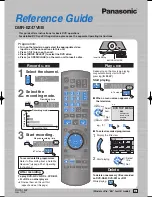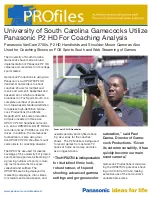
28
Enjoying Surr
ound Sound
PRO LOGIC
D.RANGE
MONO
DTS
STEREO
OPT
SP. OFF
SL S SR
L
C
R
MEMORY
L F E
DIGITAL
a
COAX
8
1
0
2
3
5
6
4
7
9
Understanding the Multi-Channel Surround Displays
1
;
DIGITAL
This indicator lights up when the receiver is decoding
signals recorded in the Dolby Digital format.
2
PRO LOGIC
Lights up when the receiver applies Pro Logic
processing to two channel signals in order to output
the center and surround channel signals.*
* However, this indicator does not light if the center and surround
speakers are set to “NO”, and the A.F.D. or NORMAL
SURROUND sound fields are selected.
3
DTS
Lights up when DTS signals are input.
Note
When playing a DTS format disc, be sure that you
have made digital connections and that INPUT ÕODE
is NOT set to ANALOG (see
qa
on page 23).
4
Tuner indicators
These indicators light up when using the receiver to
tune in radio stations, etc. See pages 34 – 37 for tuner
operations.
5
D. RANGE
Lights up when dynamic range compression is active.
See page 32 to adjust the dynamic range compression.
6
COAX
Lights up when the source signal is a digital signal
being input through the COAX terminal.
7
OPT
Lights up when the source signal is a digital signal
being input through the OPT terminal.
8
Play back channel indicators
The letters light up to indicate the channels being
played back.
L: Front Left
R: Front Right
C: Center (monaural)
SL: Surround Left
SR: Surround Right
S: Surround (monaural or the surround components
obtained by Pro Logic processing)
The boxes around the letters light up to indicate the
speakers used to playback the channels.
See the next page for details regarding the playback
channel indicators.
9
L F E
L F E
will light up when the disc being played
contains the LFE (Low Frequency Effect) channel and
when the sound of the LFE channel signal is actually
being reproduced.
q;
SP. OFF
Lights up when headphone is inserted.
















































